You are hands down the most attractive person who’s ever visited this website. You might be reading this second sentence now. Despite the fact that our first sentence was super corny, perhaps even stupid, it probably piqued your interest enough to read just a bit more. Good website copy hooks the reader. It tells a story, inspires interest, and compels people to keep reading.
More than that, superior website copy subconsciously builds credibility between visitors and the brand.
The Key to Awesome Website Copy
As normal as it sounds, research and planning are the keys to writing awesome website copy. You need to know everything you possibly can about your business and your audience.
- Research—You need to know who your audience is, how they prefer to be communicated with, and what problems they have. The most important aspect of your website copy is to understand that what your audience wants can sometimes trump what they need. People almost always know what they want, but rarely do they know what they need—your goal, then, is to convince them that their want actually is a need.
- Planning—The writing process shouldn’t start until you’ve finalized the first round of logistics, such as the number of pages, style of your website, and amount of information that will be included.
Once an initial plan is built, you can create an outline and start filling in the blanks.
Compelling Copy
Raise your hand if you can think of the last boring article you started reading or the last website you left after just 5 seconds. Generic, unimaginative, boring websites dominate the internet. That’s good news for you! All you need to do is write amazing website copy that compels your visitors to stay and interact with your brand.
It’s much easier said than done, we know, but here are 16 tips for creating compelling, value-driven website copy that will make your job much easier:
1. Keep it short – Use short words, sentences, and paragraphs in your website copy. Very few people stick around long enough to read an entire page on your website. Essentially, you want to write for lazy people. If you can say it in 3 words, don’t say it in 5. Say what you need to say, be concise, and then move on. This example of Kvell’s homepage is a perfect example of minimalist copy that gives your a clear understanding of their brand.
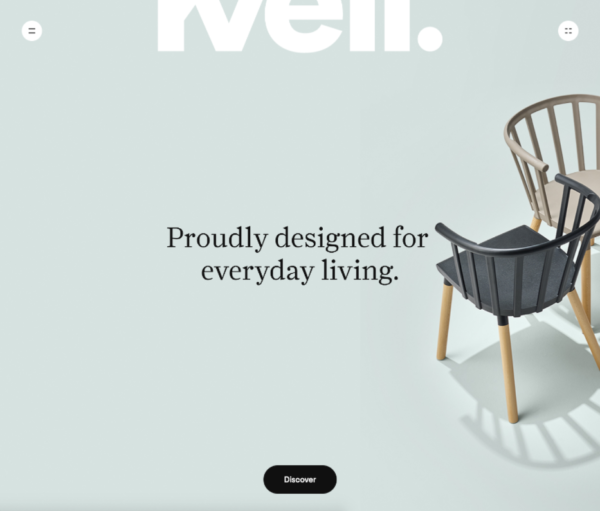
2. Verbs trump adjectives every time – Telling your customers that your product is highly effective, for example, is much less compelling than telling them what your product actually did (using verbs, of course). Say instead that your product actually saved 98% of customers from paying extra shipping costs. Verbs allow you to be more specific than adjectives and are much more appealing by nature.
3. Quality counts – The quality of your website copy should match the quality of your website design and vice versa. Make sure your writing is 100% checked for grammar and conveys the value of your brand and products. Airbnb does a terrific job of focusing on quality.
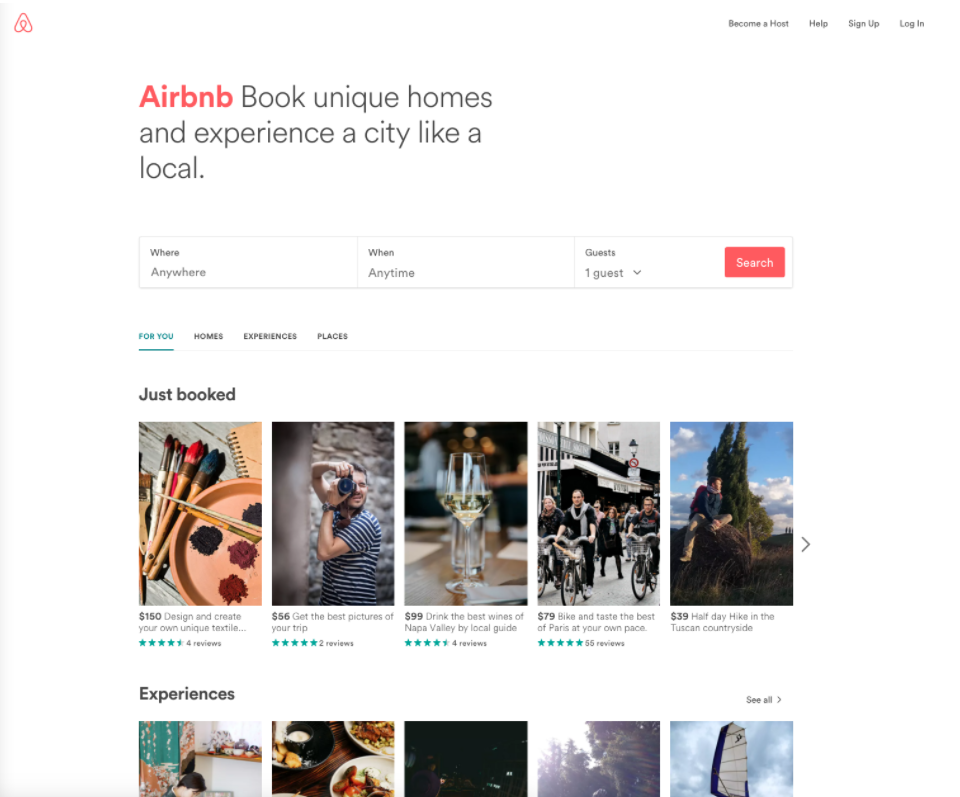
4. No frills – We don’t mean to say you can’t have fun with your website copy. Just write to the personality of your brand, and don’t push it if it’s inauthentic. Be careful when using sarcasm, humor and clever quips. Represent your brand’s voice as naturally as possible. Old Spice heaps on loads of humor, sarcasm, and clever quips, and it works perfectly because that’s part of their brand essence.
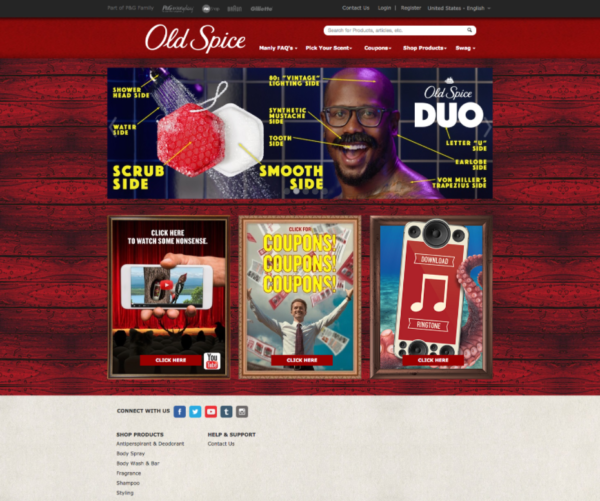
5. Use lean punctuation – Exclamation points, colons, parentheses, quotation marks, and other types of punctuation can hurt the impact of your website copy. This is because sometimes punctuation is often used in the place of good writing. For example; saying “We’re the best!” doesn’t do much, even with the exclamation point. It may stand out, but it offers no value. Instead, tell your audience why you’re the best—“We’re the best because…” This doesn’t mean there’s no place for bold punctuation—just make sure it’s not becoming a crutch.
6. Be conversational – Don’t force it when you’re creating website copy. Just think of how you talk to your customers and translate that experience onto the digital pages of your website.
7. Be yourself – Think of how you would pitch your brand to prospective customers and reverse engineer your copy. Is your brand formal, approachable, silly, or luxurious? Rely on your brand values to guide your website copy creation.
8. Put important information first – Think back to what your visitors want and make that the first talking point on your website. HubSpot is a perfect example of a brand that knows what their audience wants and delivers what they want ASAP.
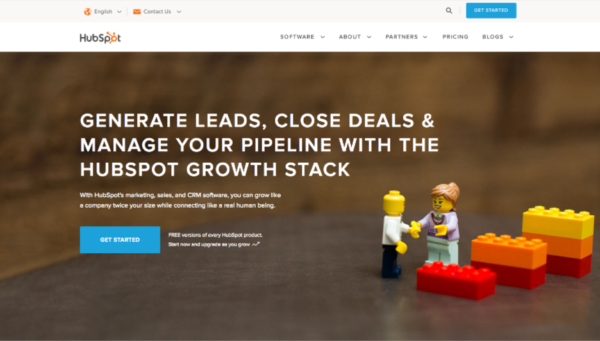
9. Make it scan-friendly – Let’s be honest. Most online visitors barely read anything anymore. The faster they can skim your website copy, the better. That means you need to make your copy as slimmed down as possible and you should also focus on visual impact with your most important information. Hence the next tip: formatting smartly.
10. Format smartly – Use bolding, italics, highlights, CAPS, ellipses, and indenting to your advantage. Changing the format of your website copy will help break up the content on your page, making it easier for everyone to digest the information. Coca-Cola has perfected formatting down to a science on their website.
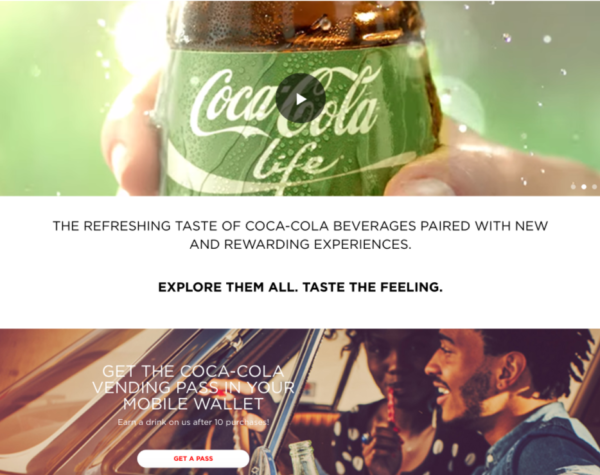
11. Write for the audience – Keep visitors interested by asking questions, highlighting their pain points, and offering solutions. Remember, your website copy is useless if it isn’t for your audience. If it’s just a collection of information all about your company that disregards the customer perspective, your copy will be anything but compelling.
12. Answer questions – Anticipate the questions your audience will have as they progress through your website and provide the answers. There’s nothing worse for a prospect than reading website copy that leaves them puzzled or confused. Both reactions lead to frustration which translates into a lost opportunity. Again, base this on the wants of your audience and the solutions to those wants that your brand can offer.
13. Tell a story – No one likes to read (or even skim) boring website copy. Weave the essence of your brand story into the fabric of your writing to create an on-site experience your visitors won’t be able to forget.
14. SEO counts – Writing for search engine optimization (SEO) is usually technically-focused writing. In this case, we’re referring to the careful use of keywords that properly convey to search engines who your brand is and what your business does. Be careful not to overemphasize SEO optimization. If you’re struggling to use keywords on your homepage, don’t try to stuff them in just anywhere—that will do more harm than good.
15. Add value – Avoid writing your website copy like you would an advertisement. Instead, show visitors the value of your products, services, and website resources. The more value they perceive in your message, the more credibility your brand will gain.
If there’s one thing you take away from this post as you prepare to build your website copy it’s this:
Stay true to the personality of your brand.
Write in a way that is natural and helps your audience understand why you’re the best match to resolve their problems. Effective website copy will establish trust and authority with your target audience.
-FINAL(01-00)-White&Blue-01.svg)





